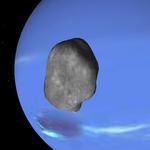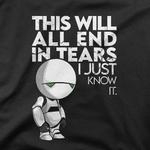@gastric Danke, ich hab zwischenzeitlich auch schon mal geschaut.
Milch und Milchprodukte können durchaus das Osteoporoserisiko senken. Ich hatte jetzt keine Lust eine ausführliche Recherhce zu starten, 2 Studien werden also vorerst ausreichen müssen.
Bone mineral density in postmenopausal Chinese women treated with calcium fortification in soymilk and cow's milk.
Gui JC, Brašić JR, Liu XD, Gong GY, Zhang GM, Liu CJ, Gao GQ.
Source
Department of Nuclear Medicine, Huashan Hospital, Fudan University, 12 Wulumuqi Zhong Rd, Shanghai, 200040, People's Republic of China.
Abstract
Eighteen months of daily consumption of milk containing 250 mg calcium prevented bone mineral density (BMD) loss at the hip and the femoral neck in postmenopausal Chinese women aged 45 to 65.
INTRODUCTION:
Estrogen-related bone loss in postmenopausal women can be prevented by the consumption of milk with high doses of calcium and soymilk with high doses of isoflavones. However, high doses of calcium and isoflavones may not be necessary to attain a beneficial effect of milk and soymilk on BMD. We hypothesized that BMD will increase in postmenopausal Chinese women who consume daily 250 mg calcium in milk or soymilk. Milk prevented bone loss at the hip and the femoral neck in postmenopausal Chinese women.
http://www.ncbi.nlm.nih.gov/pubmed/22282300und diese hier
Consumption of Vitamin D-and Calcium-Fortified Soft White Cheese Lowers the Biochemical Marker of Bone Resorption TRAP 5b in Postmenopausal Women at Moderate Risk of Osteoporosis Fracture.
Bonjour JP, Benoit V, Rousseau B, Souberbielle JC.
Source
Division of Bone Diseases, Geneva University Hospitals and Faculty of Medicine, WHO Collaborating Center for Osteoporosis Prevention, Geneva, Switzerland.
Abstract
The prevention of increased bone remodeling in postmenopausal women at low 10-y risk of osteoporotic fractures essentially relies on reinforcement of environmental factors known to positively influence bone health, among which nutrition plays an important role. In institutionalized women in their mid-eighties, we previously found that consumption of fortified soft plain cheese increased vitamin D, calcium, and protein intakes, reduced bone resorption biochemical markers, particularly the serum bone specific acid phosphatase tartrate resistant acid phosphatase, isoform 5b (TRAP 5b) that reflects osteoclast activity, and stimulated the serum bone anabolic factor insulin-like growth factor-I (IGF-I). Whether these effects occur in much younger women was tested in a prospective control study. Seventy-one healthy postmenopausal women aged 56.6 ± 3.9 y (mean ± SD) with low spontaneous supply of both Ca and vitamin D were randomized to consume daily (treated, n = 36) or not (controls, n = 35) two servings (2 × 100 g) of skimmed-milk, soft plain cheese for 6 wk. The vitamin D and Ca-fortified dairy product provided daily: 661 kJ, 2.5 μg vitamin D, 400 mg calcium, and 13.8 g protein. At the end of the intervention, the decrease in TRAP 5b and the increase in IGF-I were greater in the treated than in the control group (P < 0.02). The changes in serum carboxy terminal crosslinked telopeptide of type I collagen did not differ significantly between the two groups. In conclusion, like in elderly women, consumption by healthy postmenopausal women of a vitamin D and calcium-fortified dairy product that also increases the protein intake, reduces the serum concentration of the bone resorption biomarker TRAP 5b. This response, combined with the increase in serum IGF-I, is compatible with a nutrition-induced reduction in postmenopausal bone loss rate.
http://www.ncbi.nlm.nih.gov/pubmed/22357739



